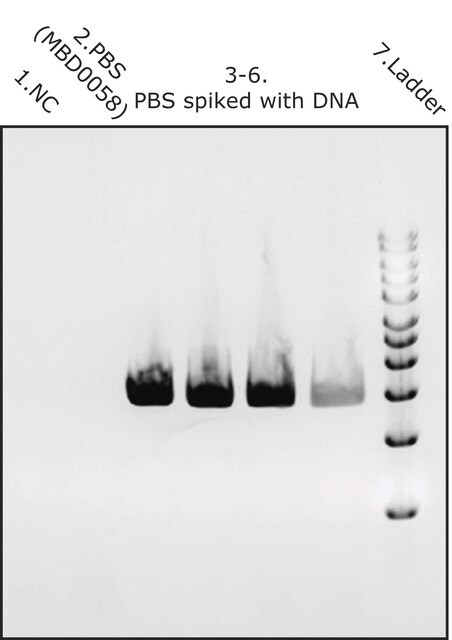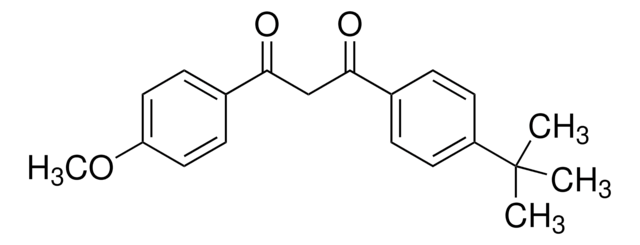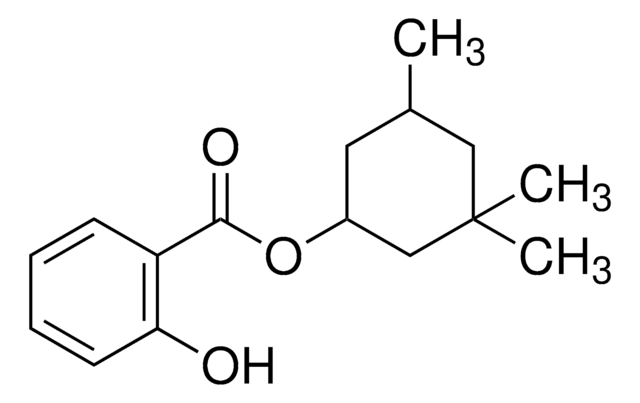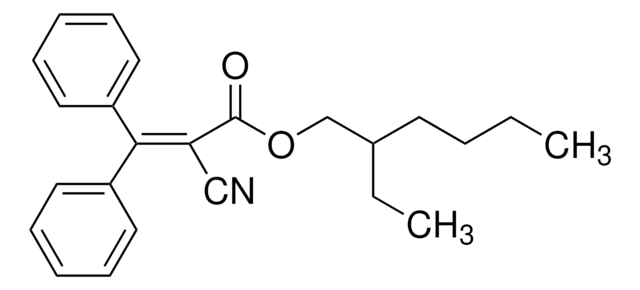Kluczowe dokumenty
PHR1121
2-Phenoxyethanol
Pharmaceutical Secondary Standard; Certified Reference Material
Synonim(y):
Ethylene glycol monophenyl ether, Phenylglycol
About This Item
Polecane produkty
klasa czystości
certified reference material
pharmaceutical secondary standard
Poziom jakości
agency
traceable to Ph. Eur. P0950000
traceable to USP 1526200
rodzina API
phenoxyethanol
Certyfikat analizy
current certificate can be downloaded
metody
HPLC: suitable
gas chromatography (GC): suitable
bp
244-246 °C
mp
11-13 °C
gęstość
1.107 g/mL at 20 °C (lit.)
Zastosowanie
pharmaceutical (small molecule)
Format
neat
temp. przechowywania
2-30°C
ciąg SMILES
OCCOc1ccccc1
InChI
1S/C8H10O2/c9-6-7-10-8-4-2-1-3-5-8/h1-5,9H,6-7H2
Klucz InChI
QCDWFXQBSFUVSP-UHFFFAOYSA-N
Szukasz podobnych produktów? Odwiedź Przewodnik dotyczący porównywania produktów
Opis ogólny
Pharmaceutical secondary standards for application in quality control, provide pharma laboratories and manufacturers with a convenient and cost-effective alternative to the preparation of in-house working standards.
2-Phenoxyethanol is a commonly used large spectrum-antimicrobial preservative used in cosmetic products and topical pharmaceutical preparations in the concentration range of 0.5–1.0%. It acts by inhibiting the coupling between the electron transport and phosphorylation reactions in mitochondria and disrupting ATP synthesis. It also prevents the activity of malate dehydrogenase and increases the permeability of cell membranes to potassium ions.
Zastosowanie
- To determine phenoxyethanol and its major metabolite, phenoxyacetic acid by liquid chromatography-tandem mass spectrometry (LC-MS/MS) in rat plasma, urine, and 7 different tissue samples
- Development of a reverse phase ultra-high-performance liquid chromatographic (RP-UHPLC) method to quantify 2-phenoxyethanol from commercially available human vaccines
- Screening of cosmetic products (CPs) for 17 widely used preservatives by high-performance liquid chromatography-photodiode-array-electrospray ionization-mass spectrometry (HPLC-PDA-ESI/MS)
- Thin layer chromatography (TLC)-densitometric determination of hydrocortisone acetate and 2-phenoxyethanol in cream samples
- Analysis of eight volatile and semi-volatile ingredients in a topical formulation by gas chromatography (GC) coupled with a programmed temperature vaporizing (PTV) inlet and a flame ionization detector
Komentarz do analizy
Przypis
Polecane produkty
Oświadczenie o zrzeczeniu się odpowiedzialności
produkt powiązany
Hasło ostrzegawcze
Danger
Zwroty wskazujące rodzaj zagrożenia
Zwroty wskazujące środki ostrożności
Klasyfikacja zagrożeń
Acute Tox. 4 Oral - Eye Dam. 1 - STOT SE 3
Organy docelowe
Respiratory system
Kod klasy składowania
10 - Combustible liquids
Klasa zagrożenia wodnego (WGK)
WGK 1
Temperatura zapłonu (°F)
258.8 °F - closed cup
Temperatura zapłonu (°C)
126 °C - closed cup
Wybierz jedną z najnowszych wersji:
Certyfikaty analizy (CoA)
It looks like we've run into a problem, but you can still download Certificates of Analysis from our Dokumenty section.
Proszę o kontakt, jeśli potrzebna jest pomoc Obsługa Klienta
Masz już ten produkt?
Dokumenty związane z niedawno zakupionymi produktami zostały zamieszczone w Bibliotece dokumentów.
Klienci oglądali również te produkty
Nasz zespół naukowców ma doświadczenie we wszystkich obszarach badań, w tym w naukach przyrodniczych, materiałoznawstwie, syntezie chemicznej, chromatografii, analityce i wielu innych dziedzinach.
Skontaktuj się z zespołem ds. pomocy technicznej












